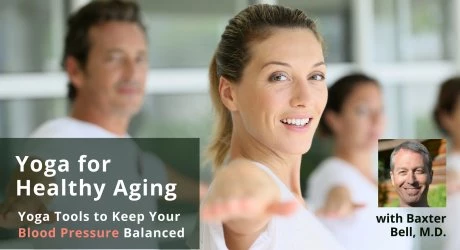Yoga for the Hypermobile: Protect Your Spine – A Sequence for Lower Body Strength

As yoga’s popularity has risen for more than a decade now, a major theme seems to be emerging: extreme stretching in an already hypermobile body can create joint problems, particularly in the hips. While it’s easy for hypermobile people to focus mostly on utilizing and increasing their flexibility, what hypermobile people really need to build is strength.
One reason I know about this issue is that one of my good friends has the thin, hypermobile body type that is super flexible but tends to lack strength. At this point, she has arthritis in both knees, so strength building in her lower body to support those joints is more important than ever for her!
So I decided to design a lower body strength-building sequence for her, which I’ll be teaching her in person. But since any hypermobile person can benefit from building lower body strength, it seems appropriate to share it here.
This sequence not only builds strength, but it avoids poses that put stress on the knees, in addition to avoiding poses that put too much weight on the hands (due to my friend’s thumb arthritis).
A Yoga Sequence to Build Lower Body Strength
This turned out to be a rather long sequence. To shorten it, simply skip any of the poses after the initial warm-up of Ardha Adho Mukha Svanasana (Half Downward Facing Dog Pose) at the wall, but finish up with the two cool-down poses.
1. Half Downward-Facing Dog Pose, with a block between your thighs, 1 minute.
Before walking your feet back, place the block, at its narrowest width, between your thighs and then walk back slowly and carefully (you can do it!). While you’re in the pose, firm your inner thighs against the block.

2. Virabhadrasana III (Warrior III Pose) at the wall, 30 seconds or more per side
If putting this much weight on one leg hurts, try bringing your hands further up the wall and dropping your leg at a bit, so you’re at more of a diagonal. Focus on activating both legs in this pose. (Baxter needs to activate his back thigh a bit more—try firming the hamstring.)

3. Adho Mukha Svanasana (Downward-Facing Dog Pose), forearm versions, 30 seconds or more.
Focus on activating your legs. Add a block between them if you like.

4. Balasana (Child’s Pose), with knee support, or Puppy Pose if that’s better for you, 1 or more minutes.
See Balasana: Child’s Pose for information on Child’s Pose.

5. Downward-Facing Dog Pose, forearm version, with leg raises, 20 seconds or more per side.
From forearm version of Downward-Facing Dog Pose, (or from the regular version of Downward-Facing Dog pictured here) as if you were practicing Warrior III at the wall, take one leg up behind you for a few breaths. Bring your foot back to the floor and then repeat on the other side. Focus on activating both legs.

6. Child’s Pose with knee support, or Puppy Pose if that’s better for you, 1 or more minutes.


7. Phalakasana (Plank Pose), forearm version, as long as you can comfortably hold it.
See 7 Reasons Why You Should Practice Plank Pose and 4 Awesome Versions to Keep You Safe. Work on building up your endurance in this pose over time. Keep both legs active and lifting up away from the floor.

8. Tadasana (Mountain Pose), block between thighs, 1 minute.

9. Utkatasana (Fierce Pose or Powerful Pose), block between thighs, 30 or more seconds.
Be sure to firm your thighs against the block.

10. Virabhadrasana II (Warrior II Pose), classic version, bending front knee only as far as feels okay, 30 or more seconds per side.
Be sure to keep both legs active in this pose. Pay attention to that back leg!

11. Vrksasana (Tree Pose), any version that’s comfortable, 30 or more seconds per side.
Firm the muscles of the standing leg.

12. Supported Backbend, any version, 1 to 3 minutes.
Keep your legs active as you relax your upper body.

13. Salabhasana (Locust Pose), either classic version or lifting just your legs.
Be sure to firm your hamstrings (backs of your thighs) to help lift your legs.

14. Dynamic Setu Bandha Sarvangasana (Bridge Pose), 6 or more times.
Instead of moving into Bridge Pose and staying for a few breaths, in Dynamic Bridge Pose, you lift and lower your hips, slowly and mindfully, following the rhythm of your breath. Be sure to firm your hamstrings (backs of your thighs) to help lift your legs.

15. Bridge Pose, classic version, 1 to 3 minutes.
Be sure to firm your hamstrings (backs of your thighs) to help lift your legs.

16. Constructive Rest Pose, 3 or more minutes.
Relax your legs (yay!) and let your knees fall toward each other. Tie a strap around them, just above the knees, if you like.

17. Viparita Karani (Legs Up the Wall Pose), any version, 5 or more minutes.
You can find instructions on how to move into Viparita Karani here. Position yourself so you do not feel any stretch in your legs. If your back feels tender when you are ready to do this pose, try it with no props at all, with your back flat on a mat or a thin blanket. Keep your legs only lightly active. Tie a strap around them, just above the knees (toward your head), if you like.

Study with Dr. Baxter Bell and YogaUOnline – Yoga for Healthy Aging: Yoga Tools to Keep Your Blood Pressure Balanced.
Reprinted with permission from Yoga for Healthy Aging Blogspot
Photos courtesy of Melina Meza
 Nina Zolotow, RYT 500, Editor-in-Chief of the Yoga for Healthy Aging blog, is both a yoga writer and a yoga teacher. She trained to be a yoga teacher at The Yoga Room in Berkeley, California, has studied yoga therapy with Shari Ser and Bonnie Maeda, and is especially influenced by the teachings of Donald Moyer. She also studied extensively with Rodney Yee, and is inspired by the teachings of Patricia Walden on yoga for emotional healing. Her special area of expertise is yoga for emotional well-being (including yoga for stress, insomnia, depression, and anxiety) and she teaches workshops and series classes on yoga for emotional well-being, stress management, better sleep, home practice, and cultivating equanimity. Nina is the co-author with Baxter Bell of Yoga for Healthy Aging: A Guide to Lifelong Well-Being and co-author with Rodney Yee of Yoga: The Poetry of the Body (with its companion 50 Card Practice Deck) and Moving Toward Balance. She is also the author of numerous articles on yoga and alternative medicine.
Nina Zolotow, RYT 500, Editor-in-Chief of the Yoga for Healthy Aging blog, is both a yoga writer and a yoga teacher. She trained to be a yoga teacher at The Yoga Room in Berkeley, California, has studied yoga therapy with Shari Ser and Bonnie Maeda, and is especially influenced by the teachings of Donald Moyer. She also studied extensively with Rodney Yee, and is inspired by the teachings of Patricia Walden on yoga for emotional healing. Her special area of expertise is yoga for emotional well-being (including yoga for stress, insomnia, depression, and anxiety) and she teaches workshops and series classes on yoga for emotional well-being, stress management, better sleep, home practice, and cultivating equanimity. Nina is the co-author with Baxter Bell of Yoga for Healthy Aging: A Guide to Lifelong Well-Being and co-author with Rodney Yee of Yoga: The Poetry of the Body (with its companion 50 Card Practice Deck) and Moving Toward Balance. She is also the author of numerous articles on yoga and alternative medicine.




